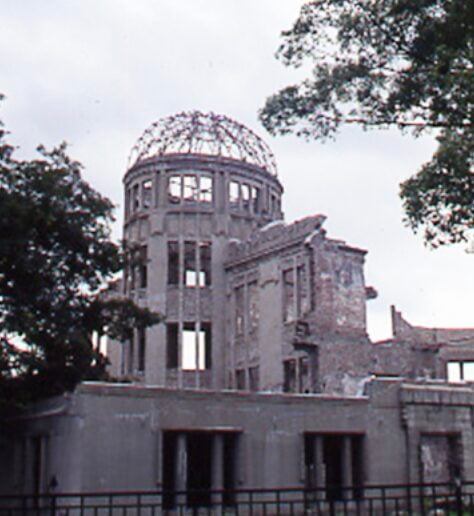Nearly 40 years after it closed, the final phase of the Maxey Flats clean-up project is underway, giving our region a sense of closure it truly deserves.
Over the years there have been many people who have played a major role in keeping Maxey Flats as safe as possible. I cannot speak highly enough about those locally who played a frontline role in stopping Maxey Flats from taking additional low-level radioactive waste and who have since made sure that contamination stays as contained as possible.
The late John P. Hay, Herb Jolly, Ruth Hilterbrandt, Nancy Powell, Dr. Ed Story, the late Adell Armitage, and Morehead State University Professor Jerry Howell were part of an influential citizens group that sounded the alarm early on. Their efforts in the sixties and seventies made community leaders, lawmakers, and citizens aware of the dangers this contamination posed. Their efforts should forever be recognized.
Past and current staffs at the site have consistently gone above and beyond in performing their jobs, as have all the employees of the Energy & Environment Cabinet who have played a key role in making it possible to construct a permanent cap. They all deserve tremendous credit for their dedication and a job well done.
When my father, the late Dr. Mitchel Denham, served in the Kentucky House of Representatives, he was honored to receive Fleming County in the redistricting process in 1975. He then played a role in closing Maxey Flats in 1977, something that he always considered one of his major accomplishments as a legislator. The late Rep. Pete Worthington continued the quest to keep Maxey Flats closed and to make it safe.
I was honored to have the opportunity to work with Gov. Steve Beshear and my colleagues in the 2014 General Assembly to provide the necessary funding to put on a final, permanent cap that is based on the most up-to-date engineering and technology and designed to meet the strictest Environmental Protection Agency requirements for a cap on a hazardous waste disposal facility.
Those in Frankfort beyond Beshear who worked on obtaining funding for the permanent cap include House Majority Leader Rocky Adkins; former state Sen. Walter “Doc” Blevins; former state Rep. John Will Stacy; Energy and Environment Cabinet Secretary Len Peters; and Kate Shanks, the executive director of the Office of Legislative and Intergovernmental Affairs within the Energy and Environment Cabinet. I deeply appreciate all they did.
The final cap consists of specially-engineered, multiple layers of both soil and manufactured synthetic materials designed to: 1) minimize the downward movement of water through the cap into the waste disposal trenches and subsurface; 2) effectively repel stormwater with stormwater structures that will control runoff and direct it away from the final cap in a manner that will not result in excessive erosion of the cap or the surrounding terrain; and 3) provide a physical barrier covering the buried waste materials to minimize the potential for release of the waste to the environment and exposure of the wastes to the public.
Each of the individual layers of the cap has one or more specific purposes and functions that are designed to meet the overall design objectives for the cap as described above. In addition to the positive features noted above, once the final cap is constructed, it will be much easier to maintain and monitor in the future than the interim (temporary) cap.
While nothing can be guaranteed in this type of situation, this approach remains what I think is the best solution with the current technology and the monitoring that will have to be maintained for generations no matter how we had proceeded.
Our only other options were to leave the current temporary cap alone or to replace the temporary cap with a new temporary cap; had we taken either of those approaches, in the hopes of finding something better down the road, there would be no guarantee the state funding would be there as it is now. Following placement of the final cap, state agencies are required to monitor the site for many years to come to make sure the final cap is performing as designed and that the public is protected.
What we do know is that once the permanent cap is ready by the fall of 2016, the site will be as safe as humans can make it. Then we can begin declaring this nightmare largely over once and for all.
Rep. Mike Denham, a Democrat from Maysville, has represented House District 70 (Bracken, Fleming and Mason counties) since 2001.


















I read recently that Indian Point Nuclear Facility has storage of 1500 tons of radioactive waste onsite.
I read a recent article about Savannah River Site’s MOX, the cost of the Mixed Oxide Fuel Fabrication Facility, or MOX, is about $20 billion more than what the Energy Department reported last year. The $51 billion includes the $4 billion already spent on MOX. MOX was funded at $375 million per year reported it would cost about $110 billion to complete.
I also read recently that the DOE and NRC officials are still in the planning stages of key developments to cleanup and treat the Hanford WA Nuclear Reservation’s radioactive waste, continuing into the 2060s, with more than $30 billion already spent on Hanford cleanup alone, and costs could be as high as $113 billion. In 25 years, no radioactive waste has been treated for a safe and permanent disposal. These costs were also cited in articles that discussed the US Government Accounting Office. Their website site has current information regarding the disposal of High-Level Nuclear Waste
GAO “The nation’s decades of commercial nuclear power production and nuclear weapons production have resulted in growing inventories of spent nuclear fuel and other high-level nuclear waste. This highly radioactive waste is currently stored at sites in 35 states because no repository has been developed for the permanent disposal of this waste.
Commercial nuclear power production in the U.S. has resulted in over 70,000 metric tons of spent nuclear fuel—fuel that is used and removed from nuclear reactors—and the inventory is increasing by about 2,200 metric tons per year. If spent nuclear fuel assemblies were stacked side by side, they would fill a football field over 17 meters deep. In addition, nuclear weapons production and other defense-related activities have resulted in about 13,000 metric tons of spent nuclear fuel and other high-level nuclear waste.
This high-level waste is extremely radioactive and needs to be isolated and shielded to protect human health and the environment. It is currently being stored primarily at sites where it was generated. After spending decades and billions of dollars to research potential sites for a permanent disposal site, including at the Yucca Mountain site in Nevada, the nation remains without a repository for disposal and future prospects are unclear.” http://www.gao.gov/key_issues/disposal_of_highlevel_nuclear_waste/issue_summary